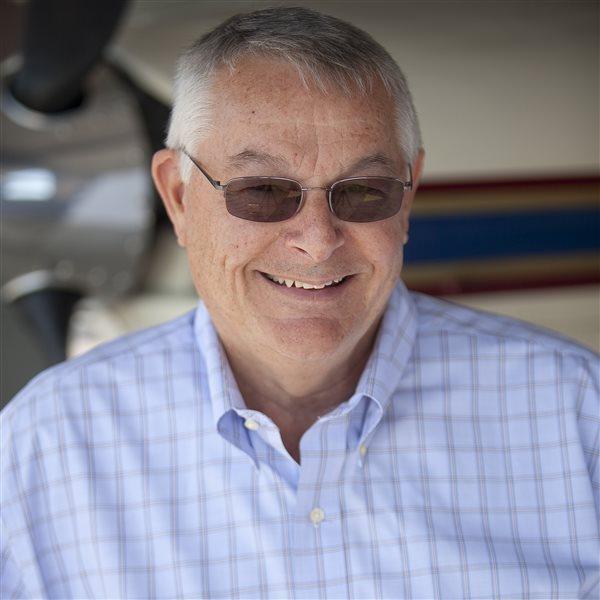High-performance tube-and-fabric airplanes fly out of Maule Air
Maule Air Inc. in Moultrie, Georgia, is family owned and operated, but it is a family company in many more ways. There are lots of people named Maule at Maule, but there are also workers who have relatives employed in the plant. Mother-daughter, husband-wife, and nephew-uncle combinations are common throughout the factory. Although founder B.D. Maule died in 1995, the pilot famously photographed flying a Maule out a factory door to demonstrate short-takeoff capability, his presence is still felt. His Rolls-Royce, its tires now flat, sits in the back of the factory and his philosophy of an affordable aircraft remains in the minds of those who worked closely with him. His wife, June, now 87, is the president and comes to work every day when she is not out on speaking engagements.
The company is known for making a low-budget airplane that is high on performance and utility: New airplanes start at about $100,000. The fuselage and tail on all the models are mostly tube and fabric, while the wings, the rearward portion of the cowling next to the fuselage, and the forward belly skin are aluminum. The engine cowling itself is composite material, a fiberglass and carbon-fiber combination. While model designations range from M-4 to M-7, the fuselages themselves are all similar: There may be more doors, a longer cabin inside, or a few inches more of height, but differences are hardly discernable. Thus, one simple design certificated by B.D. Maule in 1961 has blossomed into numerous tailwheel, float-mounted, and tricycle-gear aircraft with powerplants ranging from 160-horsepower Lycoming pistons to 420-shaft-horsepower Allison turbine engines.
Maules — the airplanes — have a loyal following. A customer encountered at the plant during the preparation of this article said, "This is the best value in aviation." He was there to photograph the progress on his conventional-gear M-7 model. The majority of the nearly 50 aircraft Maule sold last year were tailwheel aircraft. Not a tailwheel pilot? The Maule-operated flight school, Maule Flight, located near the factory will teach you.
The plant's secret weapon is Vice President David Maule, who can generally be found in the machine shop quietly developing customer-pleasing innovations. They include a quick disconnect for the rear seat and structural changes that will allow a maximum-gross-weight increase for a forthcoming M-9 model.
Newly married Brent Maule handles advertising and sales for the family, while Ray Maule, Brent's father, continues as company test pilot and initiator of the new $100,000 M-4 two-passenger model, actually an updated revival of one first offered in the 1960s. Shirley Maule is the senior design drafter. (Most, but not all, of the Maule family members working at the factory are company owners.) Not all the Maules are in the factory; one, Susan, is an airline pilot.
Although located deep in Georgia about a 30-minute drive north of the Florida state line on Spence Airport, and staffed by a workforce of Georgians, the Maule factory and family are transplanted from Michigan. Many in the plant were with the company in those earlier days. All that experience shows in the final product: Most of the aircraft pass their rigging test on the initial test flight.
While its roots are in Michigan, the company has adopted the Georgia culture. Ray's home, where he lives with wife Rautgunde (who works at Maule Flight), brings visions of Willie Nelson singing about "moonlight through the pines" from the song Georgia on My Mind. The home of Kit Maule, chief mechanic of Maule Flight, and the cabin of Ray and Rautgunde 100 yards away sit near a pine-tree-surrounded lake that Ray keeps populated with swans and ducks. Brent and wife Charissa live nearby, just across a grass runway from the pond. The swans swim like speedboats toward Ray whenever he comes home, knowing that the sight of Ray equals food.
Another pet with a run of the factory is Willie, a two-year-old German shepherd born with a gimpy leg. Known for marking various areas of the plant as his own, and even marking workers he doesn't like, Willie has taken to blocking Ray's takeoffs to keep him from leaving. Most takeoffs are made from Maule's huge ramp that was once part of the Army's Spence Air Base in the 1940s. The military is back, using the airport for training in Raytheon T-6A Texan IIs.
With roots in the past, Maule embraces the future through modern avionics and new technology. Sitting in the rear of the factory, not far from B.D.'s car, are a diesel-powered Maule expected to be certified this year, a Maule sporting a four-blade composite propeller, and a Rotax-powered Maule. Work is continuing on the four-blade composite prop, but a decision was pending on whether to continue the Rotax model.
Whether it is certified or not, expect a new model from Maule every year. The company slices and dices its options of size, weight, landing gear, and powerplants so often that one FAA official calls Maule the "Potato Head Factory" (see " The Potato Head Factory," February 1998 Pilot), because it can easily generate a new model.
E-mail the author at [email protected].



